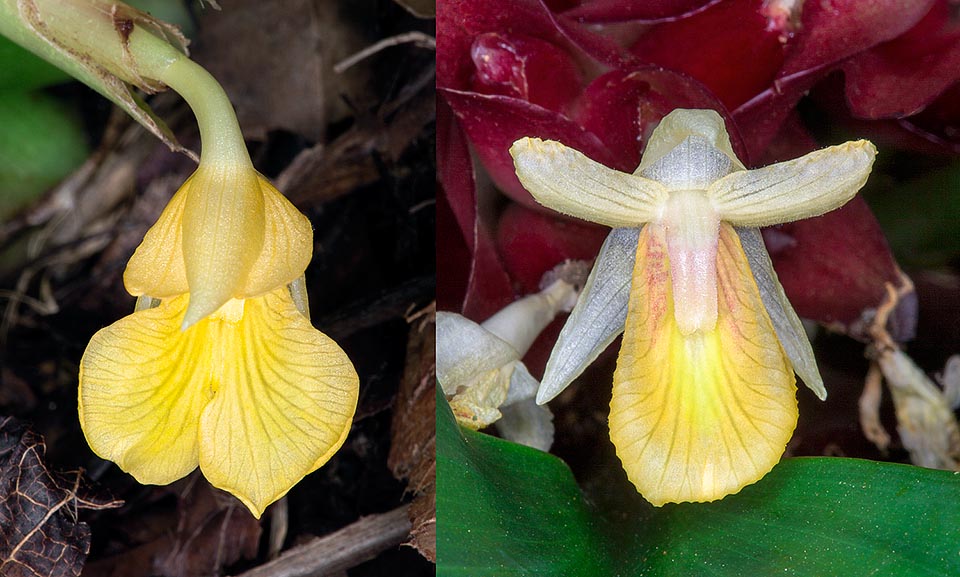Family : Zingiberaceae

Text © Pietro Puccio

English translation by Mario Beltramini
The species is native to Peninsular Malaysia (Perak) where it grows in the underwood of the humid forests, often along the banks of the water streams, at low altitudes.
The name of the genus is the combination of the Greek substantives “σκάφος” (scaphos) = hull and “χλαμύς” (chlamys) = mantle, with reference to the shape of the bracts; the species is dedicated to the German explorer and collector Hermann H. Kunstler (1837-1887).
The Scaphochlamys kunstleri (Baker) Holttum (1950) is an evergreen herbaceous species, acaulescent, with creeping rhizome and leaves, on a deeply grooved, 12-15 cm long, petiole, oblong with pointed apex, 22-30 cm long and 10-15 cm broad, of glossy dark green colour above, suffused with purple below.

Native to the humid Perak forests, the Scaphochlamys kunstleri is a rhizomatous creeper with 22-30 cm leaves on a 12-15 cm petiole © Giuseppe Mazza
Three varieties are recognized: Scaphochlamys kunstleri var. kayuweh C.K.Lim (2008), Scaphochlamys kunstleri var. rubra (Ridl.) Holttum (1950), Scaphochlamys kunstleri var. speciosa C.K.Lim (2001) that differentiate from the type species mainly due to the colour of the flowers.

The tiny flowers, here opening and mature, generate gradually from a spiral inflorescence with purplish imbricate bracts towards the apex © Giuseppe Mazza
Species with ornamental foliage and coloured inflorescences, but little cultivated, particularly suitable as ground cover exclusively in the tropical and humid subtropical climate zones, in partially shady to shady position, on draining soils rich of organic substance, maintained constantly humid. It well adapts to the cultivation in pot for the decoration of inner spaces, even if little luminous, with temperatures and ambient humidity averagely high. This last may be obtained with frequent nebulizations utilizing non calcareous water at ambient temperature or placing the pot on an ample saucer filled with expanded clay, or rubble, and water at a level such not to touch the bottom of the pot, this creates a humid microenvironment around the plant. The waterings must be regular, in order to maintain constantly humid the substratum, but with no stagnations, cause of possible rottenness.
Synonyms: Curcuma kunstleri Baker (1890); Kaempferia lutea C.H.Wright (1907); Gastrochilus kunstleri (Baker) Valeton (1918); Hitcheniopsis kunstleri (Baker) Ridl. (1924).
